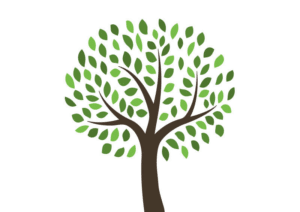
The Importance of Professional Tree Removal: When to Say Goodbye to a Tree
Trees aren’t just beautiful and essential to our environment; they are integral to our daily lives. They provide shade on hot summer days, enhance the aesthetics of our landscapes, and contribute to cleaner air and a healthier ecosystem. While trees give so much to us, there are times when removing a tree can become a necessity.
When the trees on your property start posing a safety risk- professional involvement is needed. Don’t let the trees that are supposed to make your home beautiful turn hazardous. Deciding that a tree needs to be removed can be hard. We’ve compiled a list of different factors to consider when determining whether or not to say goodbye to that tree. By understanding the signs and seeking professional assistance, it’s possible to ensure safety, preserve the health of surrounding trees, and maintain the overall beauty of your landscape.
Identifying Hazardous Trees
Being able to identify hazardous trees is key in protecting your family and property from damage or worse. Ideally, it’s best to have a certified arborist come out to your property to evaluate your trees’ health and potential risk. If you can’t have an arborist come out, there are signs that you can look out for that give some insight into whether your tree could be hazardous.
Leaning Trunk
Generally, trees should grow straight and upright. If you notice that one or more of your trees have a significant lean in the trunk (especially if it’s a sudden or worsening change), it may be an indication of structural instability, and the tree could potentially fall.
Cracks and Splits
Visible cracks or splits in the trunk of the tree or on major branches can also indicate structural weakness. Deep or extensive cracks pose a serious risk to your property. If these splits or cracks get worse, the tree needs to be evaluated to see if removing it will be the safer choice for both your property and your family.
Dead or Dying Branches
Dead or dying branches that don’t produce leaves or have brittle, hanging, or bare branches, are all signs of tree decline. These branches are unstable and can break and fall unexpectedly, posing serious risks to both people and property.
Decay and Cavities
Soft, spongy, or crumbling wood, along with cavities (or hollows) within the trunk or major branches can all point to a decaying tree. When a tree starts to decay, the structure of the tree weakens greatly and is much more susceptible to breakage or complete failure.
Root Issues
Issues involving a tree’s roots can be hard to see. But signs like heaving soil, exposed roots, or obvious damage to the root system can indicate instability. Trees that have compromised roots are more likely to fall during storms or high winds.
Canopy Imbalance
If you have trees that seem uneven in regards to their foliage, there may be underlying structural issues. The uneven foliage distribution can make one side significantly heavier than the other- which can lead to a tree toppling.
Disease and Infestations
If you see mushrooms or fungal conks at the base or on the trunk of a tree- that’s a sign of decay. Fungi often grow in decayed wood, which further compromises the stability and strength of the tree.
Other types of disease or pests will also compromise the tree’s structure while also having the potential to spread. Removing a sick tree can protect not just your family, but also the surrounding trees.
Proximity
Trees that are growing too close to structures, power lines, or underground utilities can pose a significant risk. As the tree grows, its roots and branches may cause damage to these structures, leading to potential damage. Don’t let a root system destroy your home’s foundation; or heavy, leaning branches fall on your roof at the first sign of wind.
Landscaping and Aesthetics
To get the look you want from your property, sometimes it requires removing a tree. Sometimes it’s not about safety but aesthetics. A tree can detract from the beauty of your property, block views, or inhibit the growth of other plants. A professional tree removal service, like Gray Brothers Tree Service, can help your yard achieve a sense of balance and harmony.
Environmental Responsibility
There will always be a certain level of environmental impact when a tree is removed. No matter the reason for needing to remove the tree, it is important to approach it with an understanding of the environmental implications and strive for sustainability. Ultimately, the goal is to maintain a balance between our needs as property owners and humans and the preservation of nature.
Professional Tree Removal Service in Middle Georgia
Recognizing the importance of professional tree removal services and understanding when it’s necessary to say goodbye to a tree is crucial for the safety, health, and aesthetics of outdoor spaces. By being aware of the signs of a hazardous tree, such as structural instability, disease, pest infestations, or encroachment; it’s possible to take proactive measures to guarantee the well-being of our property, the surrounding trees, and the overall beauty of our landscape.
While saying goodbye to a tree may be difficult, understanding the greater purpose behind professional tree removal can help with embracing the future and all the possibilities. By working with a reputable tree service provider, like Gray Brothers Tree Service, you can rest easy knowing the process is handled responsibly and sustainably.


